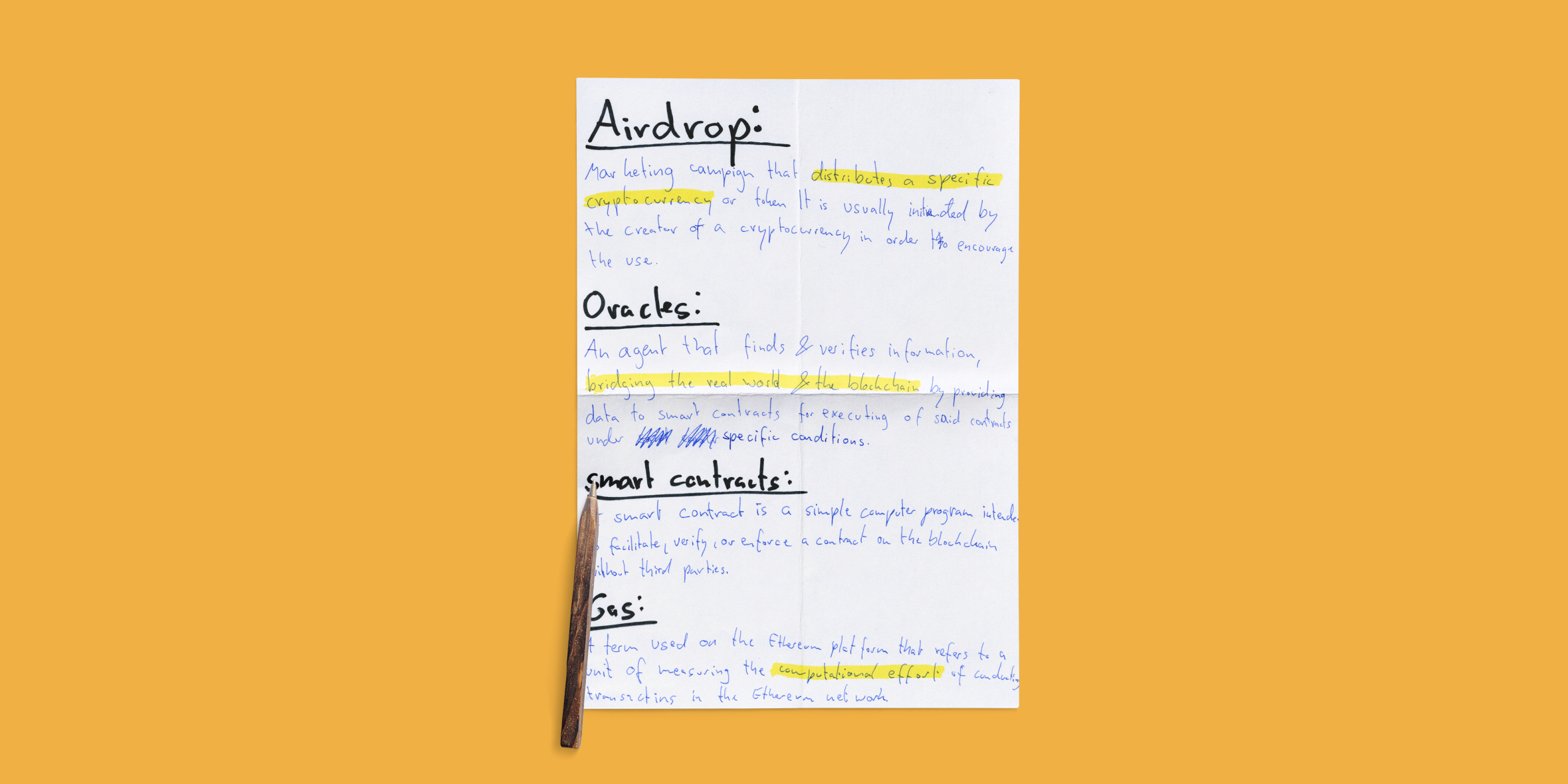UX Pitfalls of Blockchain: 6
Jargon
Jargon is the specific terminology associated with a particular field or area of activity. It is that jargon can have a negative impact on communication between professionals and laypeople. When niche words and phrases are used in applications that are intended for first time users, these unfamiliar words become meaningless jargon that provides no value. It clouds and complicates meaning, which is irritating and alienating to users, with potentially harmful consequences to all parties.


by Maximilian Blazek
August 16th, 2021
What is Jargon
Jargon is specific terminology associated with a particular domain. It is essential to describe new entities for which there is no name yet, and it ensures the lingual precision and accuracy required for some domains. Jargon definitely has its place in the world as a means of making communication between experts more efficient and precise. But suppose it is used in the wrong context, for example, in an app intended for end consumers. In that case, it can have a clear negative impact on the communication between the application and the user. When niche words and phrases are used in applications intended for users who are not experts in the domain, these words become meaningless and hold no value. It obfuscates and complicates meaning, which can be irritating and off-putting to users and ultimately detrimental to both the user and the application.
From my research, I can say that pretty much all blockchain applications are full of jargon. While the terms "airdrop”, "oracles”, "smart contracts” and "gas" may be second nature to blockchain enthusiasts, they are meaningless and confusing to people taking their first steps into blockchain.
Why Jargon is bad
[...] he will be able to speak of it in the easy language, and with the completeness of conviction, with which he talks of any ordinary every-day matter. If he does not, he will be afraid to wander beyond the limits of the technical phraseology which he has got up; and a dead dogmatism, which oppresses, or raises opposition, will take the place of the lively confidence, born of personal conviction [...] - Aldous Huxley on teaching 1
There are two ways in which jargon can be bad. The first is when it is poorly formed — for example, when it is linguistically incorrect, a misnomer, unnecessarily long, or similar (a more detailed list can be found in 2). Although jargon in blockchain often falls into this category (i.e., Zero-Knowledge Succinct Non-Interactive Argument of Knowledge or zkSNARK 👀), I will focus on the second type of Jargon in this article: jargon that is ill-adapted to its audience.
This second poor use of jargon is anywhere in an application intended for end-users who are not blockchain experts. Likely, the majority of blockchain users will not understand blockchain jargon when they are first getting started. And if jargon is not understood, it might lead to unwanted outcomes.
Users only have limited mental energy at their disposal. In order to understand jargon that they are not familiar with, they must expend some of that mental energy to hypothesize about the word or look it up. More energy is then used to read and absorb the rest of the sentence, and the remaining mental energy must be used to internalize the sentence’s content and to understand the meaning. That means that the more frequently jargon is used in an app, the more time and attention users must spend absorbing and understanding the information. Time and attention that should instead be spent on what's important at this point —understanding the information you want to convey in your interface.
In summary, jargon forces new users to spend unnecessary mental energy on understanding new, obscure words. Instead this energy should be used on actually understanding the product and any information that is necessary for users to be able to use the app successfully.
This extra effort often leads to frustration on the part of users. It can lead to fundamentals being misunderstood and wrong actions being taken. Erroneous action in blockchain is often much more fatal than in traditional web applications, because many actions in blockchain cannot be reversed. In the worst case, jargon could lead users to abandon an app out of frustration and lack of understanding.
Finally, jargon makes an app less accessible because it disadvantages people with cognitive/learning disabilities and people with limited language comprehension.
Jargon in Blockchain applications
The following screenshots are not meant to criticize the design of the apps. On the contrary, most of the applications shown are very well designed! Some of these apps may have deliberately chosen to use particular jargon, because their app’s target audience is more experienced users. Thus, these screenshots are only meant to be examples of the prevalence of jargon in blockchain applications in general.
Conclusion
If blockchain products are to be usable by everyone, at every level of understanding, then applications will have to communicate to users in a way that everyone can quickly and easily understand. They should use jargon sparsely, and communicate in as plain language as possible. Otherwise, as described above, niche phrases will increase users’ mental overhead considerably. I know that it is difficult to determine what is jargon and what is not when you are deeply familiar with a subject. It happens to me all the time. However, as designers (and people interested in design), it's our job to bridge the gap between specialists and end-users. We should take a step back and evaluate if all the information in the text of an application is easy and quick to understand. In the end, an easy to understand application creates the best outcomes for everyone — inside and outside the blockchain domain.
Sources
1: Scientific Education: Notes of an After-Dinner Speech, Aldous Huxley, 1869







